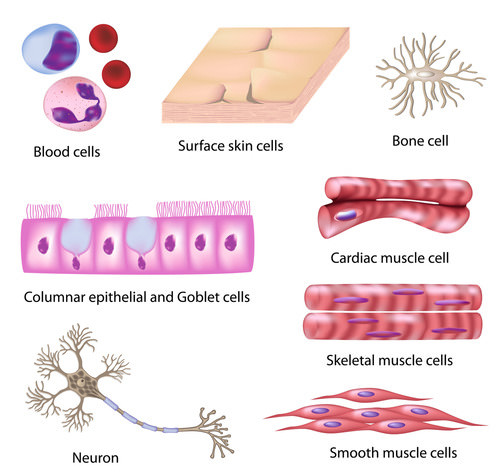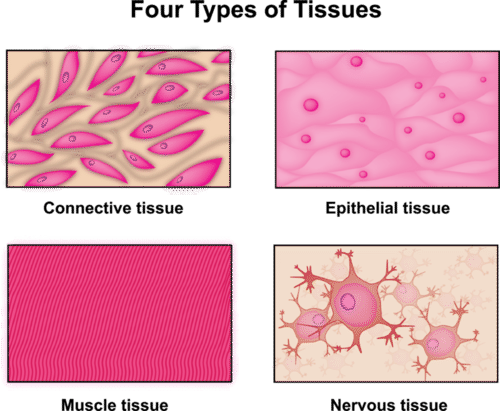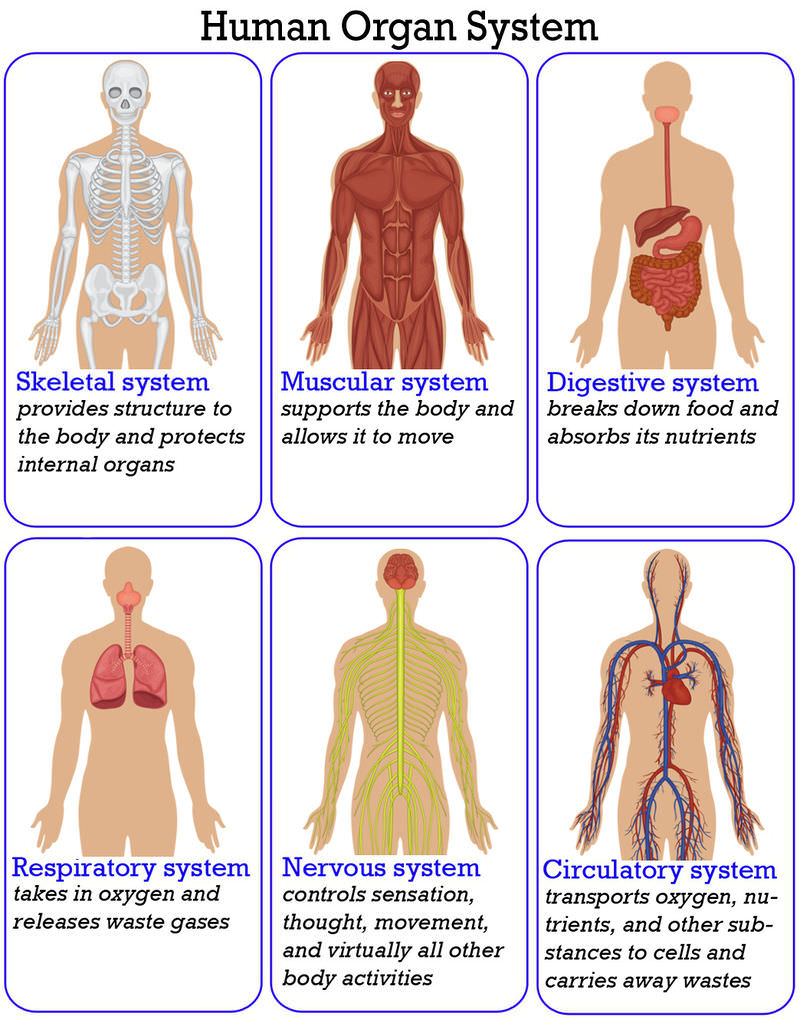READ: Organization of Your Body
READ: Organization of Your Body
Cells, like these nerve cells in the picture above, do not work in isolation. To send orders from your brain to your legs, for example, signals pass through many nerve cells. These cells work together to perform a similar function. Just as muscle cells work together, bone cells and many other cells do as well. A group of similar cells that work together is known as a tissue.
Cells
The most basic parts of the human body are cells—an amazing 100 trillion of them by the time the average person reaches adulthood! Cells are the basic units of structure and function in the human body, as they are in all living things. Each cell carries out basic life processes that allow the body to survive. Many human cells are specialized in form and function, as shown in the figure below. Each type of cell in the figure plays a specific role. For example, nerve cells have long projections that help them carry electrical messages to other cells. Muscle cells have many mitochondria that provide the energy they need to move the body.

Tissues
After the cell, the tissue is the next level of organization in the human body. A tissue is a group of connected cells that have a similar function. There are four basic types of human tissues: epithelial, muscle, nervous, and connective tissues. These four tissue types, which are shown below, make up all the organs of the human body.
- Connective tissue is made up of cells that form the body’s structure. Examples include bone and cartilage.
- Epithelial tissue is made up of cells that line inner and outer body surfaces, such as the skin and the lining of the digestive tract. Epithelial tissue protects the body and its internal organs, secretes substances such as hormones, and absorbs substances such as nutrients.
- Muscle tissue is made up of cells that have the unique ability to contract, or become shorter. Muscles attached to bones enable the body to move.
- Nervous tissue is made up of neurons, or nerve cells, that carry electrical messages. Nervous tissue makes up the brain and the nerves that connect the brain to all parts of the body.
Groups of Tissues Form Organs
A single tissue alone cannot do all the jobs that are needed to keep you alive and healthy. Two or more tissues working together can do a lot more. An organ is a structure made of two or more tissues that work together. The heart is made up of the four types of tissues. Examples of human organs include the brain, heart, lungs, skin, and kidneys.
Organ Systems
Human organs are organized into organ systems, many of which are shown below. An organ system is a group of organs that work together to carry out a complex overall function. Each organ of the system does part of the larger job.
Organ Systems Work Together
Eight of your body’s organ systems are shown below. Your organ systems do not work alone in your body. They must all be able to work together. Your skeletal and muscular system work together so you can dance. Your nervous system and muscular system work together to help you read this page.
One of the most important functions of organ systems is to provide cells with oxygen and nutrients and to remove toxic waste products such as carbon dioxide. A number of organ systems, including the circulatory and respiratory systems, all work together to do this.
Organ System | Major Tissues and Organs | Function |
Circulatory | Heart; blood vessels ; blood | Transports oxygen, hormones , and nutrients to the body cells. Moves wastes and carbon dioxide away from cells. |
Excretory | Kidneys; urinary bladder | Removes extra water , salts, and waste products from blood and body; controls pH; controls water and salt balance. |
Digestive | Esophagus; stomach; small intestine ; large intestine | Digests foods and absorbs nutrients, minerals , vitamins, and water . |
Respiratory | Trachea, larynx, pharynx, lungs | Brings air to sites where gas exchange can occur between the blood and cells (around body) or blood and air (lungs). |
Muscular | Cardiac (heart) muscle; skeletal muscle; smooth muscle; tendons | Involved in movement and heat production. |
Skeletal | Bones, cartilage; ligaments | Supports and protects soft tissues of body; produces blood cells; stores minerals . |
Nervous | Brain, spinal cord; nerves | Collects, transfers, and processes information. |
| Reproductive | Female: uterus; vagina; fallopian tubes; ovaries Male: penis; testes; seminal vesicles | Produces gametes (sex cells) and sex hormones. |
Systems Working Together Form an Organism
When body systems interact you get an organism. Though these systems seem to function alone, they need to work together to make a living organism. If one of the systems is not working properly, it can cause illness and death to the organism.
Summary
- The human body is organized at different levels, starting with the cell.
- Cells are organized into tissues, and tissues form organs.
- Organs are organized into organ systems such as the skeletal and muscular systems




